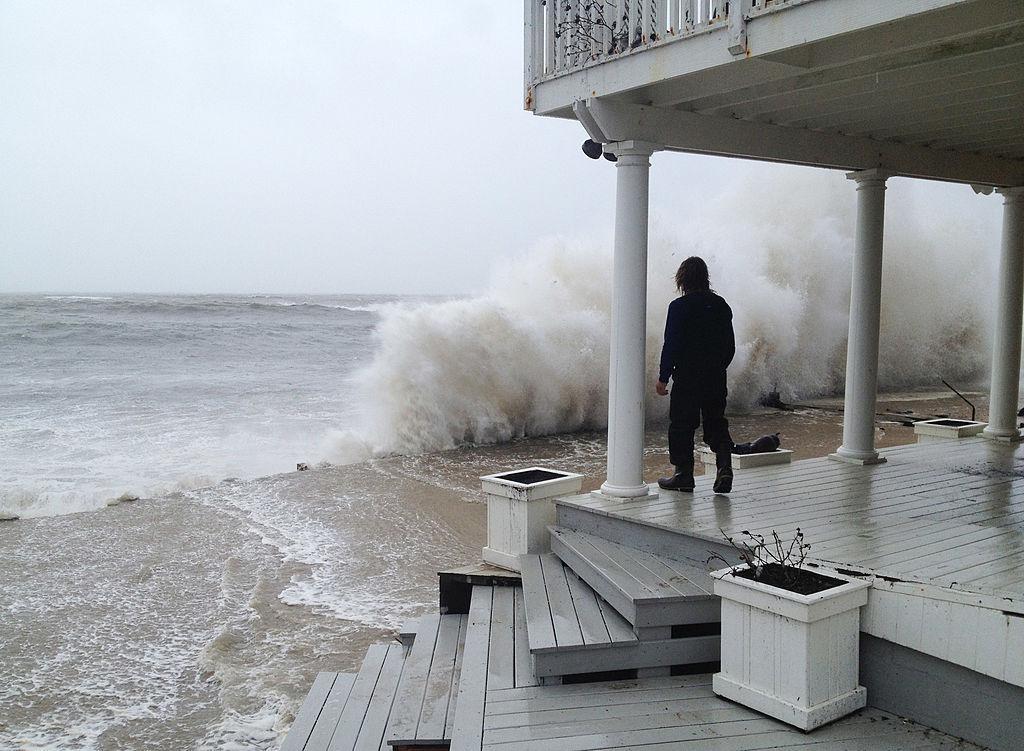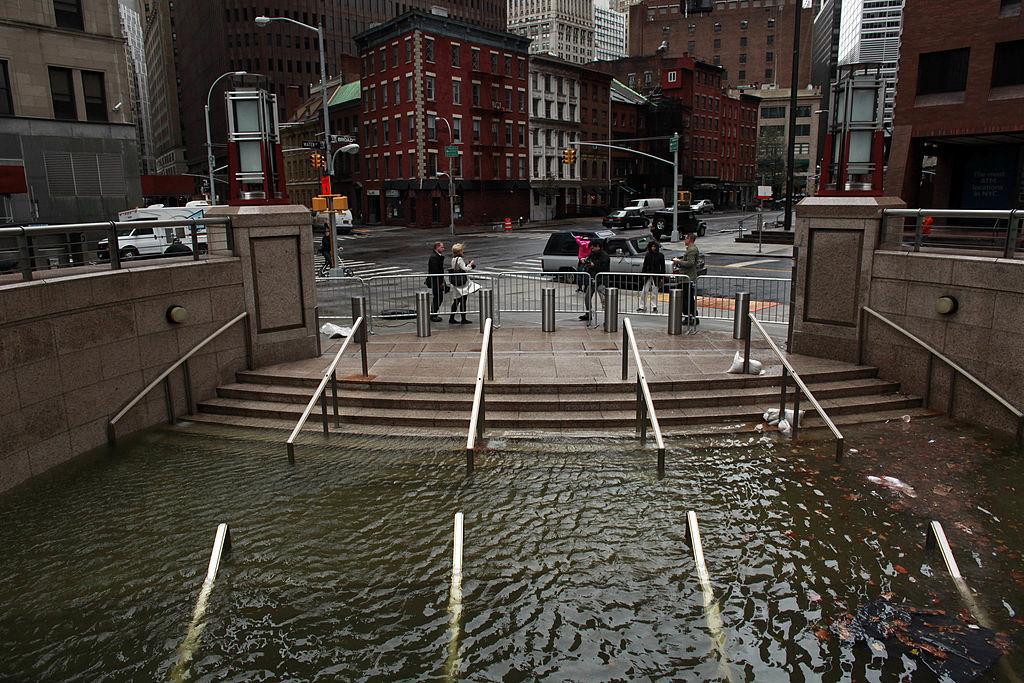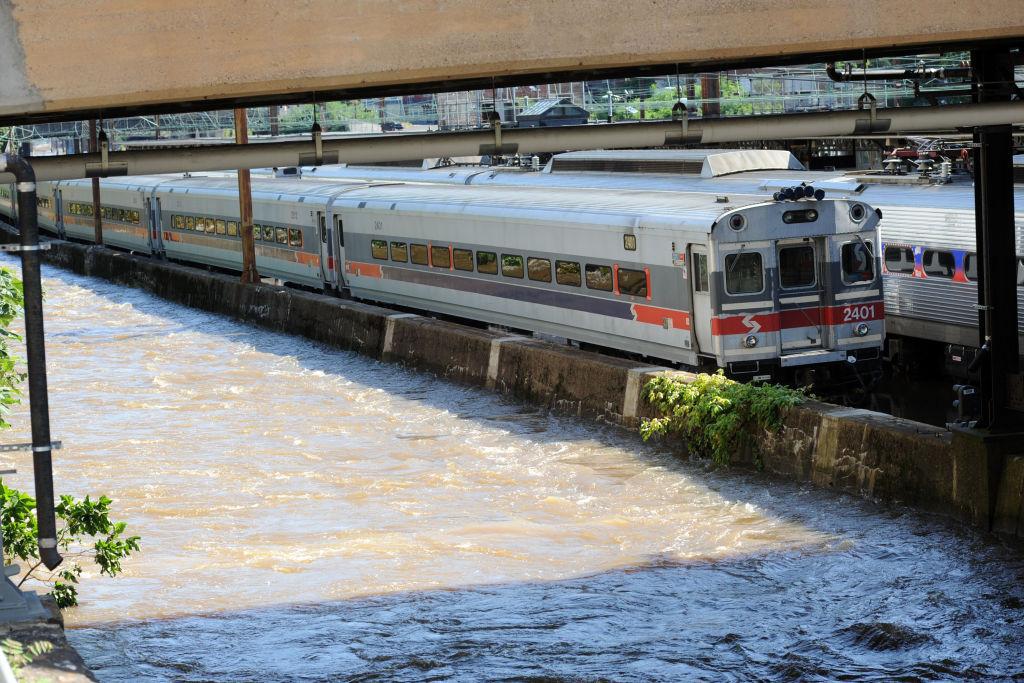New York City Skyscrapers Are Slowly Sinking the Island
More than eight million people call New York City home, and millions of others visit the metropolis every year.
Part of its charm is that the Big Apple lies on islands and peninsulas surrounded by water. However, new reports show that New York City could and likely will be under that water a lot sooner than anyone originally thought.
Is New York City Sinking?
There’s no doubt about it: New York City is certainly sinking, albeit very, very slowly. According to data collected by the U.S. Geological Survey, NYC is sinking about 0.04-0.08 inches every year.

Source: Chris Hondros/Getty Images
Essentially, the city itself is simply too heavy for the land it sits on. The many skyscrapers and buildings weigh an incredible 1.68 trillion pounds, not to mention the weight of the eight million residents, countless millions of visitors, two million cars, and heavy subway trains.
Was Building NYC Skyscrapers a Mistake?
Tom Parsons, a geophysicist for the U.S. Geological Survey, wants to make it clear that “[W]e’ve just got to keep in mind every time you build something there, you push down the ground a little bit more.”

Source: Patrick Smith/Getty Images
However, he also stated, “It wasn’t a mistake to build such large buildings in New York,” as this same phenomenon is happening in coastal cities around the country and the world—it’s just the way it is.
Climate Change Is Expediting the Process
It’s important to note that while the weight of the city is certainly slowly pushing the island further down into the ocean, climate change is expediting the process in a big way.

Source: Sheila Rooney/Getty Images
Experts report that there are essentially three major issues New York City is facing: It’s sinking, sea levels are rising, and extreme storms are causing mass floods. Of these three problems, two are directly caused by climate change.
Rising Sea Levels Around the World Directly Affect NYC
The National Oceanic and Atmospheric Administration (NOAA) has been studying sea level data from around the world for years.

Source: iStock
The organization found that overall, the global sea level has risen 3.8 inches since 1993, and it’s expected it to rise another 10-12 inches by the year 2050. The NOAA reports that the sea level will continue to rise at an expedited rate as climate change melts glaciers and ice sheets on the Earth’s North and South poles.
Storms Hitting NYC Like Never Before
In addition to melting the glaciers, researchers and experts in the field now understand that climate change is also directly causing extreme weather and storms around the world. Many of which are affecting New York City.

Source: NASA/Getty Images
Since 1970, more than 30 hurricanes and tropical storms have hit New York. The worst was Hurricane Sandy, which crashed into the giant metropolis in 2012 and caused an immense amount of damage. And in 2020, three different storms in just four and a half months flooded the city.
NYC Floods Cause Death and Widespread Damage
The hurricanes and tropical storms have caused significant damage in NYC, but undoubtedly, it’s the flooding they bring that truly endangers the lives of residents and visitors. Hurricane Sandy, for example, flooded New York City subways, causing 44 deaths and over $19 billion worth of damage.

Source: Allison Joyce/Getty Images
But it’s not just the storms that cause NYC to flood. The topography, including rivers and coastlines, as well as the densely populated urban environment and lack of infrastructure to handle the overflow of water, also play a big part in why the city seems to be consistently flooded.
Experts Predict NYC Flooding Will Get Worse in Coming Years
Although NYC flooding is already occurring at an alarming rate, NOAA experts now suggest that the city will see far more flooding in the coming years due to climate change and rising sea levels.

Source: Allison Joyce/Getty Images
In fact, the most recent report states that by the end of 2100, NYC flooding will likely happen 20 times more often than it is right now.
Will NYC Infrastructure Survive?
With this intimidating information, many are wondering if the great city of New York, including its subway system, roads, and of course, thousands of buildings, will survive even this century, let alone into the future.

Source: William Thomas Cain/Getty Images
However, the NOAA has stated that we don’t need to panic just yet. There are ways that the government, research organizations, and even New York City residents can help to ensure NYC stays afloat.
SeaLevelRise.org Spends $4 Billion to Prepare NYC for the Future
One organization that is extremely worried about the future of New York City is SeaLevelRise.org.

Source: Spencer Platt/Getty Images
This group has taken the NOAA data and decided that because of the rising sea levels, storms, and mass flooding, they will spend a whopping $4 billion to prepare the great city of New York for what’s coming next. The majority of the money will go toward disaster mitigation, such as evaluating coastal development and rebuilding coastal infrastructure to withstand rising sea levels.
What New York City Residents Can Do to Help
SeaLevelRise.Org is also encouraging New York City residents to do their part to prepare the city for flooding and rising sea levels.

Source: Mario Tama/Getty Images
Although it may feel like an impossible task, the average citizen can do their part to help slow down the sinking of the city by researching and understanding flood risks, preparing their homes for floods, and most importantly, speaking to their local and state government to ensure their political leaders know that proactive protection is important to them.
Is it Safe to Live in New York City?
Although these statistics make New York City seem bound for the bottom of the ocean, the truth is that currently, New York City is as safe from collapse as any other coastal city.

Source: iStock
These problems are real and important to understand, but that doesn’t mean the population of New York needs to worry. The city will stay where it is for the foreseeable future, and it’s highly likely that if New York City really starts to sink, San Francisco, LA, Jakarta, and many other coastal cities around the world will be in the exact same position.
